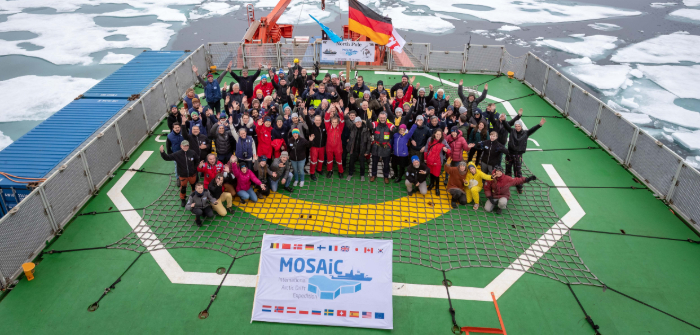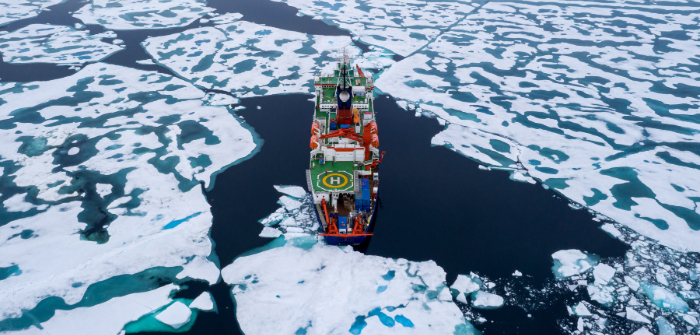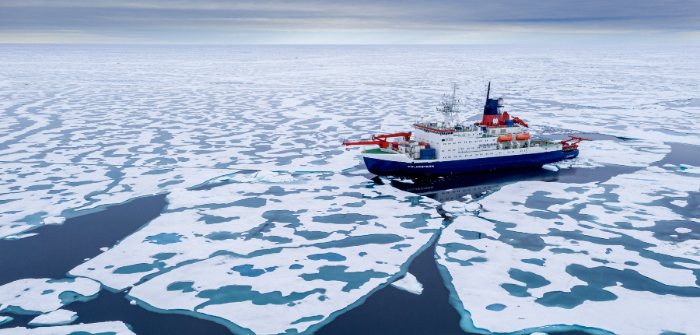The MOSAiC (Multidisciplinary drifting Observatory for the study of Arctic Climate) expedition team has reached the North Pole in a climate and ecosystem research mission.
The German research icebreaker vessel Polarstern reached the North Pole after following a route to the north of Greenland and through a region that is renowned for dense ice coverage, and even multiyear ice. The journey from the northern Fram Strait to the Pole took only six days to complete. The ship’s course was determined on the basis of sea ice charts and was selected in order to provide the fastest access to the target region for the closing segment of MOSAiC, in the center of the Transpolar Drift.
Moving on from the Pole, the Polarstern may follow the Transpolar Drift further, possibly from the pole toward Siberia, until it reaches ca. 87° north. “Depending on the ice conditions, however, we’ll also start looking for a suitable floe in the vicinity of the North Pole, so that we can start working on the ice as soon as possible,” explained Markus Rex. The researchers’ priorities will be the beginning of freezing and the early phase of ice formation. Ideally, they will study these processes on an ice floe that is as similar to the MOSAiC floe as possible.
For the final phase of MOSAiC, the expedition team is focusing on the freezing phase: the last piece of the puzzle in terms of observing the Arctic ice throughout its annual cycle. After the MOSAiC floe, as expected, broke up near the ice edge in Fram Strait in July, the team set course further north, where the freezing phase will soon begin.
 “I’m very surprised to see how soft and easy to traverse the ice up to 88° north is this year, having thawed to the point of being thin and porous,” said Captain Thomas Wunderlich. “Even after passing 88° north we mostly maintained a speed of 5-7kts; I’ve never seen that so far north. For this region, the current situation is historic. Normally it’s wise to avoid the region north of Greenland, because it’s home to the thicker and older ice, and virtually impassable. But now we’re finding extended stretches of open water, reaching nearly to the Pole.”
“I’m very surprised to see how soft and easy to traverse the ice up to 88° north is this year, having thawed to the point of being thin and porous,” said Captain Thomas Wunderlich. “Even after passing 88° north we mostly maintained a speed of 5-7kts; I’ve never seen that so far north. For this region, the current situation is historic. Normally it’s wise to avoid the region north of Greenland, because it’s home to the thicker and older ice, and virtually impassable. But now we’re finding extended stretches of open water, reaching nearly to the Pole.”
At 12:45 pm on August 19, the time had finally come: an announcement was made on the ship’s speakers, inviting everyone on board to come to the bridge and share the moment when the North Pole was reached. To mark this momentous event, countless members of the expedition team gathered on the bridge, where their eyes were glued to the position monitors, and then celebrated having reached the Pole together.




